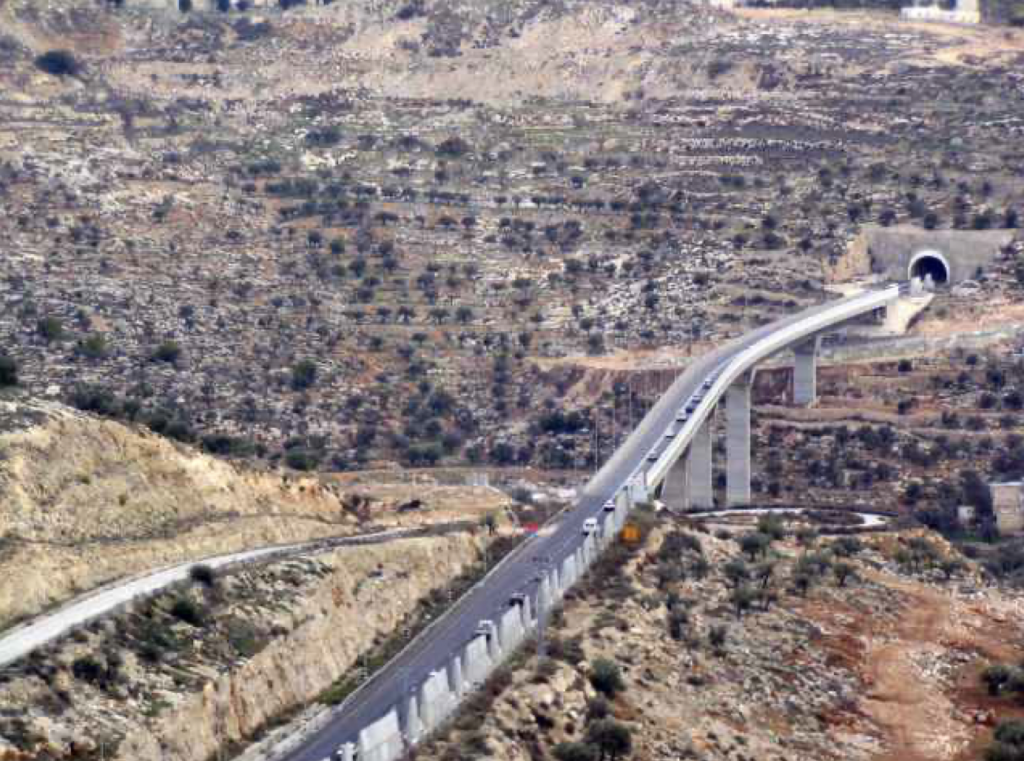by Aisha Mansour


Har Gilo is one of the 121 illegal Israeli settlements in the West Bank. It is located between my family’s house in Beit Jala and the village from which my family originates, al-Walaja. More than half of Walaja’s land has been expropriated by Israel since May 15th, 1948, what Palestinians refer to as the Nakba (the catastrophe). Many residents of al-Walaja have moved within the village to adhere to the new boundaries set forth by the colonial state of Israel, or have been displaced to surrounding refugee camps.
This loss of land is still ongoing. A newly enacted separation barrier segregates the remaining indigenous residents of al-Walaja from our farming land and access to fresh spring water. Despite the fact that many Palestinians – including my family — still hold deeds to this agricultural space, Israel insists that the separation barrier is a necessity to protect the lives of settlers living in Har Gilo. Recently Israel declared this agricultural space a national park called Refa’im Stream. This was a strategic move by the Netanyahu administration because by doing so Palestinians who harvest or access their land are now punishable by martial law. This helps Israel effectively annex more land to expand Har Gilo.
The Har Gilo settlement resides on the only connecting road between Beit Jala and al-Walaja, which are only a couple of miles distant from one another. Despite the close proximity, Israeli settlers and Palestinians do not usually interact. The gated settlement is guarded by armed soldiers to ensure that no Palestinian is allowed inside. The road connecting Beit Jala and Walaja has become extremely dangerous for Palestinians to walk on, as it is now one of the main roads used by settlers and military personnel traveling from Har Gilo to Jerusalem.
The residents of Har Gilo settlement are also able to use a highway constructed solely for the use of Israeli citizens. This apartheid highway runs through the middle of Beit Jala and connects Har Gilo to the Walaja valley through the longest road tunnel in the West Bank. This freeway is walled off and only accessible through a checkpoint, which as a Palestinian I am not allowed access to.
Israeli settlements are popping up all over occupied Palestinian land. According to a study conducted by the Jerusalem Institute for Policy Research, “More than 620,000 Israeli citizens currently reside in settlements . . . . Of these, about 209,270 live in parts of the West Bank that Israel annexed to the municipal jurisdiction of Jerusalem and 413,400 live throughout the rest of the West Bank.” (B’tselem).
These segregated towns, which are also referred to as settlements, are illegal according to the Fourth Geneva Convention. In 2016, the U.N. Security Council adopted Resolution 2334 which states that Israeli settlements are in violation of international law and hold no legal legitimacy. The motion passed unanimously 14 – 0, with the United States abstaining.
For more information about Israel’s segregated towns:
https://www.btselem.org/settlements
http://seamac.org/index.php/segregated-towns/
